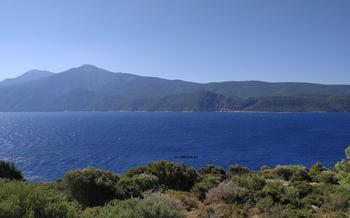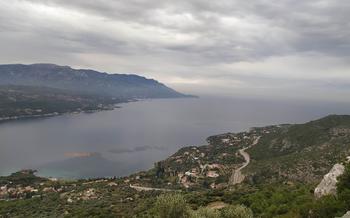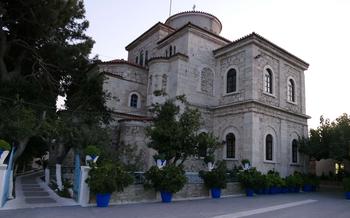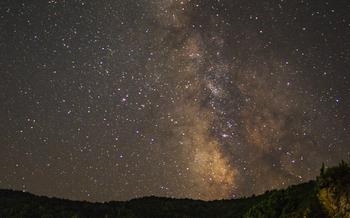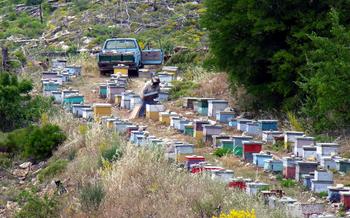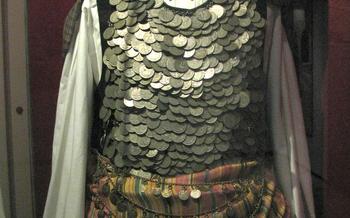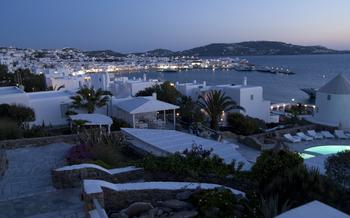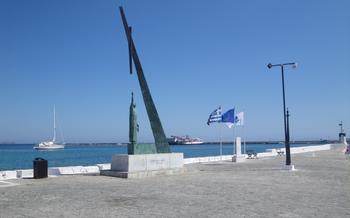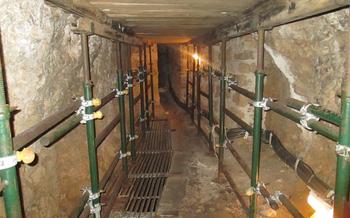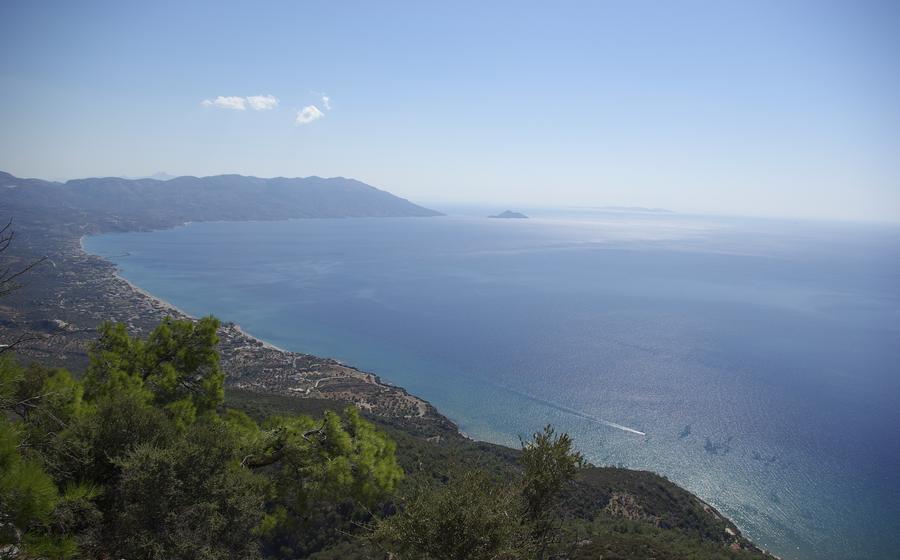
Palaeochristian Basilica of Pythagorion
- The Antiquity of Pythagoreion
- The Palaeochristian Basilica
- Mosaics and Frescoes
- Preservation and Restoration
- UNESCO World Heritage Site
- Location and Accessibility
- Visiting Hours and Admission
- Guided Tours and Audio Guides
- Dress Code and Etiquette
- Accessibility for Disabled Visitors:
- Surrounding Attractions
- Local Cuisine and Restaurants
- Shopping and Souvenirs
- Accommodation Options:
- For the love of history buffs:
The Antiquity of Pythagoreion
Pythagoreion, an ancient city on the island of Samos in Greece, holds a significant place in the annals of history. Its origins can be traced back to the 6th century BC when the tyrant Polycrates established it as a prosperous maritime and commercial center. Archaeological excavations have unearthed impressive remains of the city's glorious past, including the ancient harbor, fortifications, and temples. These discoveries provide valuable insights into the city's urban planning, architectural prowess, and economic vitality. The presence of these ancient ruins, scattered throughout Pythagoreion, creates a captivating ambiance that transports visitors back in time, allowing them to experience the grandeur of this once-flourishing metropolis.
The Palaeochristian Basilica
The Palaeochristian Basilica of Pythagoreion, also known as the Basilica of Agios Stefanos, stands as a testament to the rich religious history of Samos. Constructed in the 5th century AD, this architectural marvel showcases the transition from paganism to Christianity in the early Byzantine era. Its impressive size and intricate design reflect the basilica's significance as a center of worship and community gathering in ancient times. The basilica's well-preserved remains, including its imposing apse, suggest that it was once a grand and awe-inspiring structure. As you explore the basilica's ruins, imagine the vibrant religious ceremonies, the echoing hymns, and the fervent prayers that once filled this sacred space.
Mosaics and Frescoes
The Palaeochristian Basilica of Pythagorion is adorned with exquisite mosaics and frescoes that showcase the artistic prowess of early Christian artisans. The vibrant colors and intricate details of these artworks bring the biblical scenes they depict to life, offering a glimpse into the religious beliefs and iconography of the time.
The mosaics, particularly well-preserved and extensive, feature geometric patterns, floral motifs, and depictions of biblical figures. The central nave boasts a stunning mosaic depicting the Twelve Apostles, each with their distinct attributes. The apse, the most sacred part of the basilica, is adorned with a mosaic of Christ Pantocrator, the Almighty, surrounded by angels and saints.
The frescoes, though not as well-preserved as the mosaics, add to the basilica's visual splendor. They depict scenes from the life of Jesus, including the Nativity, the Baptism, and the Crucifixion. The expressive figures and vivid colors convey the emotional depth and significance of these events.
The symbolism and iconography used in the mosaics and frescoes are profound and meaningful. The Twelve Apostles represent the foundation of the Christian faith, while Christ Pantocrator symbolizes divine authority and power. The scenes from Jesus' life illustrate the key moments of his ministry and serve as reminders of his teachings and sacrifice.
These artworks are not merely decorative but also serve as powerful tools for religious instruction and inspiration. They have survived centuries of history, weathering the elements and human intervention, and continue to captivate visitors with their artistic and spiritual significance.
Preservation and Restoration
The Palaeochristian Basilica of Pythagoreion has undergone extensive preservation and restoration efforts to maintain its historical integrity and prevent further deterioration. The Greek Archaeological Service has played a crucial role in safeguarding this important site, implementing comprehensive conservation projects to address structural issues, protect the mosaics and frescoes, and ensure the site's accessibility to visitors.
One of the primary challenges faced in preserving the basilica is its susceptibility to environmental factors, such as humidity and seismic activity. To address this, the restoration team has employed advanced techniques to stabilize the structure, reinforce the foundations, and prevent water damage. Significant efforts have also been made to conserve the delicate mosaics and frescoes, using specialized cleaning and restoration methods to preserve their vibrant colors and intricate details.
Ongoing projects and initiatives are continuously being undertaken to protect the basilica's heritage and enhance the visitor experience. These include the installation of protective barriers around the mosaics to prevent accidental damage, the implementation of climate control systems to regulate humidity levels, and the development of educational programs to raise awareness about the basilica's significance and promote its conservation.
Through these ongoing efforts, the Palaeochristian Basilica of Pythagoreion remains a well-preserved and accessible historical site, allowing visitors to appreciate its architectural beauty, artistic treasures, and historical significance for generations to come.
UNESCO World Heritage Site
The Palaeochristian Basilica of Pythagoreion is not just a remarkable architectural and historical monument; it is also a cultural treasure recognized by the United Nations Educational, Scientific and Cultural Organization (UNESCO). In 1992, the basilica was inscribed on the esteemed UNESCO World Heritage List, earning this prestigious designation for its outstanding universal value.
To be considered for inclusion on the World Heritage List, sites must meet specific criteria that demonstrate their global significance and cultural heritage. The Palaeochristian Basilica erfüllt these criteria in several ways:
-
Authenticity: The basilica retains its original architectural features, mosaics, and frescoes, providing a genuine glimpse into the early Christian era.
-
Representativeness: As one of the best-preserved examples of an early Christian basilica, it represents a significant chapter in the history of Christianity and Mediterranean architecture.
-
Integrity: Despite its age and exposure to natural elements, the basilica has undergone meticulous restoration efforts, ensuring its structural integrity and preserving its historical and artistic value.
The inclusion of the Palaeochristian Basilica on the UNESCO World Heritage List not only acknowledges its exceptional cultural significance but also underscores the importance of preserving and protecting this valuable heritage for future generations to appreciate and enjoy.
Location and Accessibility
The Palaeochristian Basilica of Pythagorion is situated in the heart of the ancient city of Pythagoreion, on the island of Samos, Greece. The exact address is Pythagoreion 831 03, Greece. To reach the basilica, visitors can take a leisurely stroll from the Pythagoreion port, which is a 15-minute walk away. Alternatively, taxis and rental cars are readily available for those who prefer a more convenient mode of transport. Parking spaces are limited in the vicinity of the basilica, but there are designated parking areas within walking distance. The basilica is wheelchair accessible, with ramps and elevators providing easy access for visitors with disabilities.
Visiting Hours and Admission
Visiting the Palaeochristian Basilica of Pythagorion is a unique opportunity to step back in time and witness the splendor of early Christian architecture. The basilica is open to the public throughout the year, offering visitors a chance to explore its intricate mosaics, frescoes, and well-preserved remains.
-
Visiting Hours:
- Summer Season (April-October): 8:00 AM to 8:00 PM daily
- Winter Season (November-March): 8:00 AM to 5:00 PM daily
-
Admission Fees:
- General Admission: €6 per person
- Reduced Admission (students, seniors 65+): €4 per person
- Free Admission: Children under 12 years old
It is recommended to visit the basilica during the morning or late afternoon hours to avoid the midday heat, especially during the summer months. Advance booking or reservations are not required, but visitors can check the official website for any special events or closures before their visit.
Guided Tours and Audio Guides
Guided tours of the Palaeochristian Basilica are available in multiple languages, including English, French, German, and Greek. These tours offer visitors a deeper insight into the history, architecture, and significance of the basilica. Guided tours typically last for around 30-45 minutes and are led by knowledgeable and experienced guides.
The cost of a guided tour is typically included in the admission fee. To arrange a guided tour, visitors can inquire at the ticket office upon arrival. Advance booking is recommended for groups or during peak tourist season.
For those who prefer a self-guided tour, audio guides are available in several languages. Audio guides provide informative commentary on the basilica's history, architecture, and artworks. Visitors can rent audio guides at the ticket office for a small fee.
Dress Code and Etiquette
When visiting the Palaeochristian Basilica of Pythagoreion, it is essential to observe appropriate attire and behavior to respect the religious significance and sacredness of the site. Visitors should dress modestly, avoiding revealing or overly casual clothing. It is customary for both men and women to cover their shoulders and knees when entering the basilica. Shorts, tank tops, and beachwear are generally not considered appropriate attire.
It is important to be mindful of the religious nature of the basilica and to behave respectfully. This includes maintaining a low noise level, being considerate of other visitors, and refraining from engaging in disruptive activities. Photography and videography are permitted within the basilica, but visitors should be discreet and avoid using flash or tripods that may disturb other visitors or damage the artworks.
Accessibility for Disabled Visitors:
The Palaeochristian Basilica of Pythagoreion is committed to ensuring accessibility and inclusivity for visitors with disabilities. Wheelchair ramps and designated parking spaces are available for easy access to the site. Assistance is provided by friendly and knowledgeable staff who are trained to cater to the needs of disabled visitors. Inside the basilica, there are designated seating areas with unobstructed views of the mosaics and frescoes, making it easier for individuals with mobility challenges to enjoy the artwork and historical significance of the site. With these accessibility features in place, the basilica welcomes visitors of all abilities to immerse themselves in the cultural and historical richness it holds.
Surrounding Attractions
Beyond the Palaeochristian Basilica, Pythagoreion offers a wealth of historical and natural attractions. Explore the ancient city of Samos, the birthplace of the philosopher Pythagoras, with its impressive ruins, including the Heraion, a colossal temple dedicated to the goddess Hera. Immerse yourself in maritime history at the Archaeological Museum of Samos, showcasing artifacts from the island's rich seafaring past.
For a refreshing break, head to one of the pristine beaches near Pythagoreion. Potokaki Beach enchants with its crystal-clear waters and golden sands, while Psili Ammos Beach offers shallow waters ideal for families. Discover the scenic Pythagorion Cave with its stalactites and stalagmites, or take a leisurely stroll along the picturesque harbor, lined with traditional fishing boats.
Combine history and nature with a visit to the Efpalinio Tunnel, an ancient aqueduct carved into the mountainside, showcasing the engineering prowess of its creators. Marvel at the breathtaking views from Mount Kerkis, the island's highest peak, accessible via a scenic hiking trail. Embrace the island's natural beauty by exploring the Samos Forest, a lush green haven with hiking trails and picnic spots.
Local Cuisine and Restaurants
A culinary journey through Samos would be incomplete without sampling the island's delectable cuisine. From fresh seafood to aromatic herbs and succulent olives, the flavors of Samos are a symphony of Mediterranean delights.
After exploring the Palaeochristian Basilica, indulge your taste buds at one of the nearby tavernas or restaurants. Savor the simplicity of grilled octopus, drizzled with olive oil and lemon, or dive into a hearty plate of moussaka, a traditional Greek casserole of eggplant, potatoes, and minced meat.
For a truly authentic experience, venture off the beaten path and seek out local tavernas frequented by the islanders themselves. These hidden gems often serve up the most delicious and genuine dishes, prepared with love and fresh, local ingredients.
Don't forget to sample the island's renowned sweet treats, such as the delicate spoon sweets made from local fruits or the crispy loukoumades, Greek doughnuts drizzled with honey and cinnamon.
When it comes to shopping for culinary souvenirs, Samos offers a treasure trove of delights. Visit the local markets or specialty shops to stock up on aromatic herbs, succulent olives, and bottles of the island's golden olive oil. These culinary treasures will transport you back to the flavors of Samos long after your visit.
Shopping and Souvenirs
A visit to Samos isn't complete without taking home a piece of the island's rich cultural heritage. Near the Palaeochristian Basilica, visitors can find charming shops and markets offering a variety of unique souvenirs and handicrafts. From traditional Greek pottery and woven textiles to intricate jewelry and handmade leather goods, there's something for every taste and budget.
One of the must-buy souvenirs from Samos is the iconic "Samos wine," known for its distinct flavor and aroma. Visitors can find a wide selection of local wines at the shops near the basilica, including sweet dessert wines and dry table wines made from indigenous grape varieties.
For those looking for something truly unique, the local ceramics and pottery shops offer a range of handcrafted items, each one a work of art. From intricately painted plates and vases to decorative tiles and sculptures, these ceramics are a beautiful way to bring a piece of Samos into your home.
When shopping in Samos, remember to embrace the local custom of bargaining. While not as common as in other parts of the world, bargaining is acceptable and even expected at many shops and markets. It's a fun way to interact with the locals and get a better price on your souvenirs.
As you wander through the shops, keep an eye out for the distinctive "Samos blue," a vibrant shade of blue that is synonymous with the island. This color can be found in everything from pottery and textiles to jewelry and artwork, making it a unique and recognizable symbol of Samos.
Whether you're looking for traditional Greek souvenirs, local delicacies, or one-of-a-kind handicrafts, the shops and markets near the Palaeochristian Basilica offer a treasure trove of shopping experiences. So take your time, browse the stalls, and bring home a piece of Samos to cherish for years to come.
Accommodation Options:
When planning your stay in Pythagoreion, you'll find a range of accommodation options to suit different preferences and budgets. For a convenient and immersive experience, consider staying in one of the charming guesthouses or boutique hotels located within walking distance of the Palaeochristian Basilica. These accommodations often offer traditional Greek hospitality and provide easy access to the basilica and other attractions in the town.
If you prefer a more secluded retreat, there are several vacation rentals and villas available in the surrounding area. These options offer privacy, ample space, and the flexibility to prepare your own meals. When choosing accommodation, consider factors such as proximity to the basilica, your budget, and desired amenities. Research online or consult local travel agents to find the best deals and availability.
For the love of history buffs:
Nestled amidst the rolling hills of Pythagoreion, history enthusiasts will stumble upon a hidden gem known as the Tunnel of Eupalinos. This remarkable feat of ancient engineering, dating back to the 6th century BC, served as a secret aqueduct, ensuring a steady water supply to the city during times of siege. Embark on a guided tour through this marvel of human ingenuity, where you'll traverse narrow passageways and witness the incredible precision with which the tunnel was constructed. Unearth the secrets of this subterranean wonder and gain a deeper appreciation for the ingenuity of ancient Greek architects.
